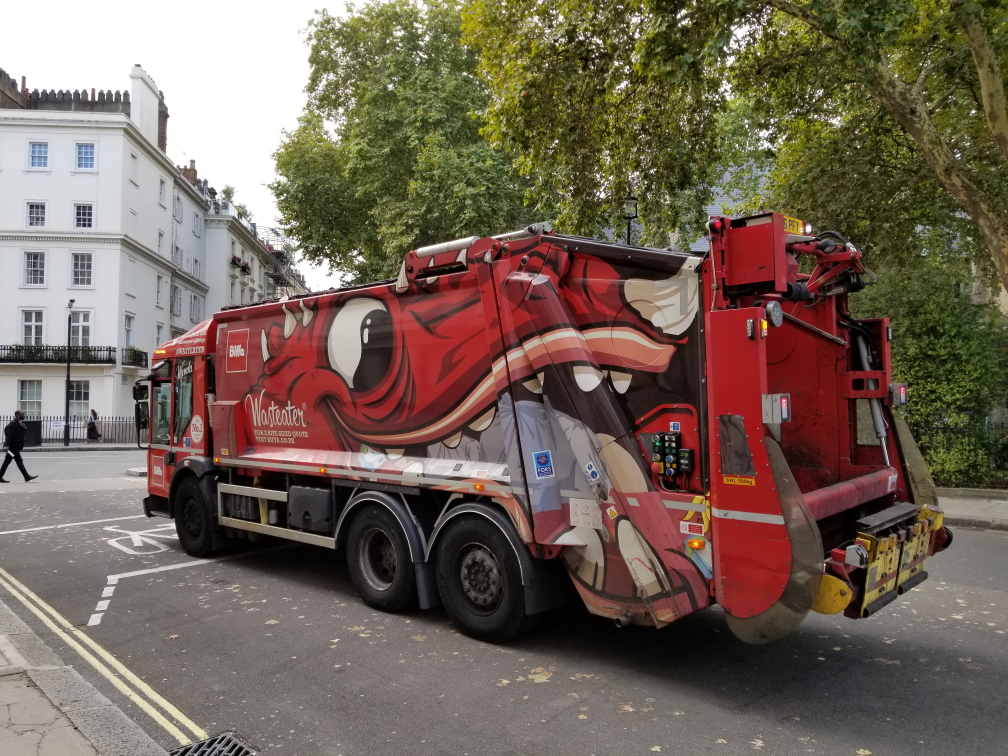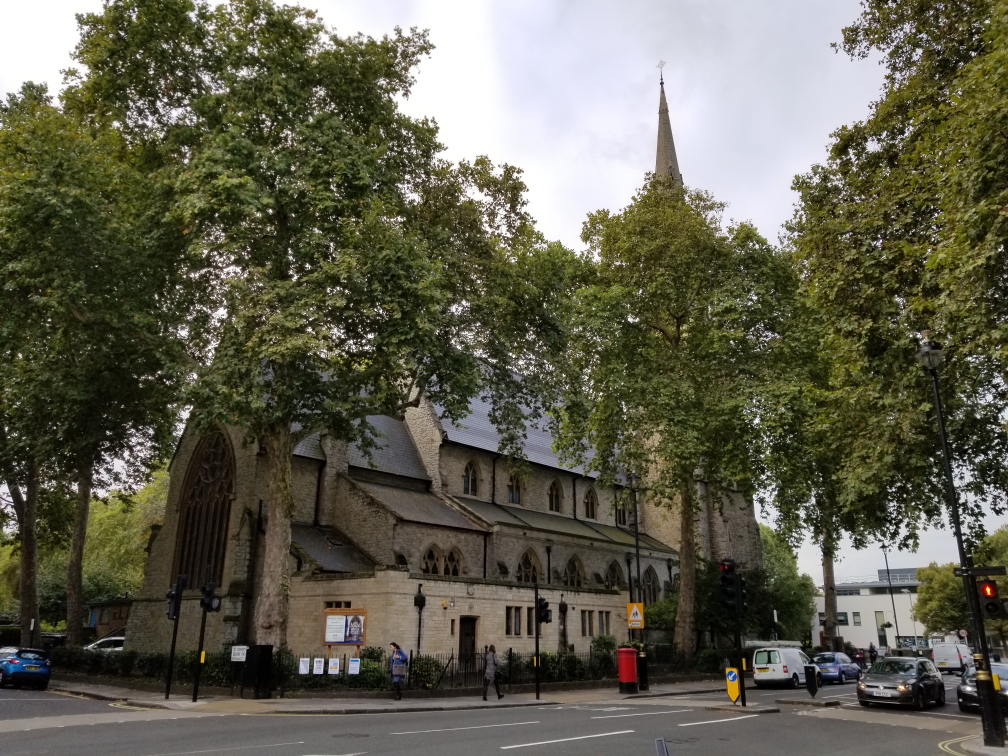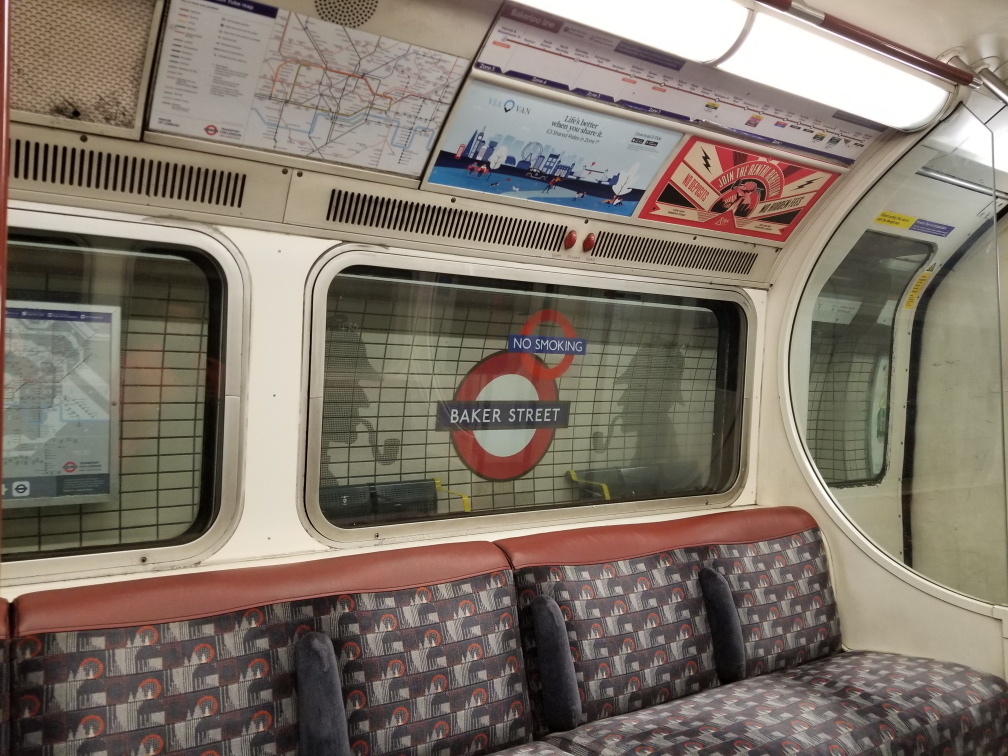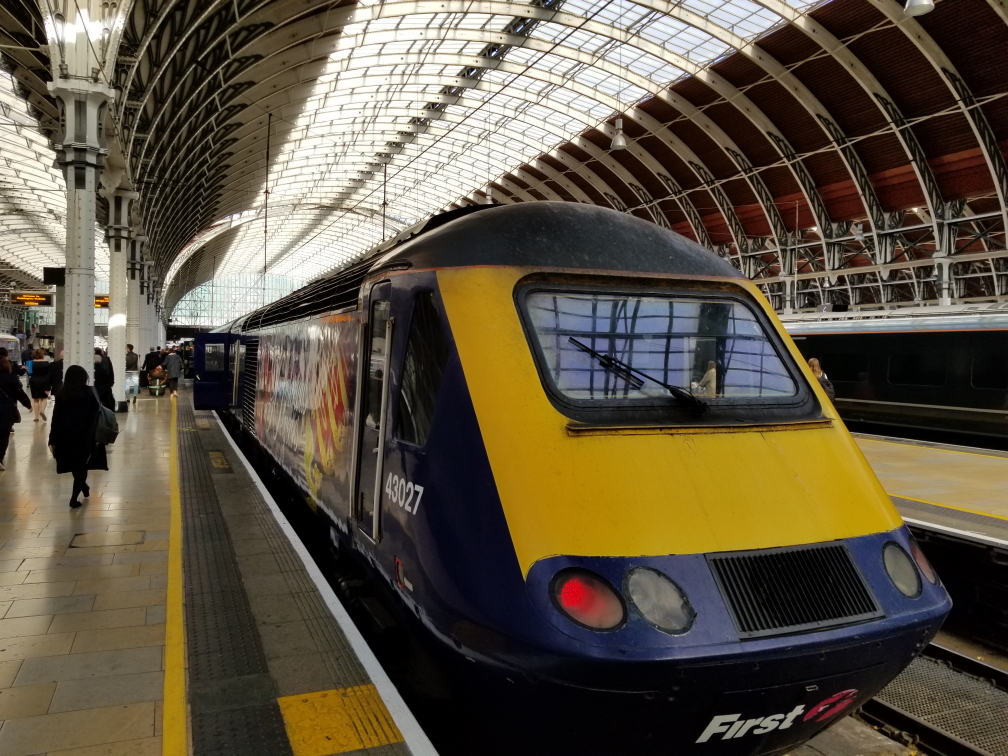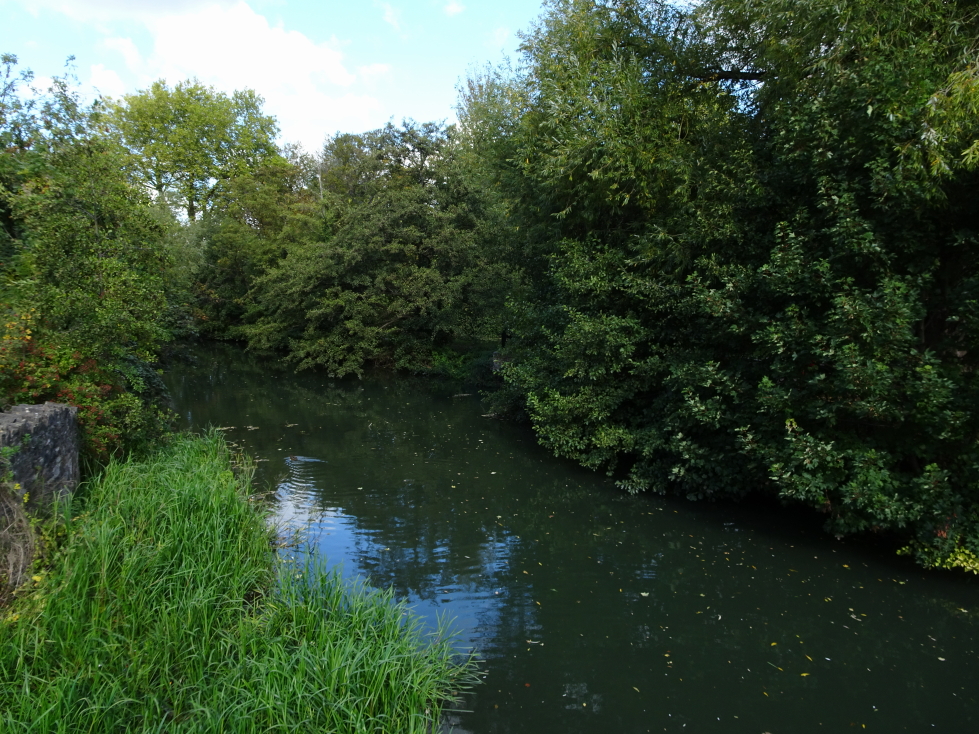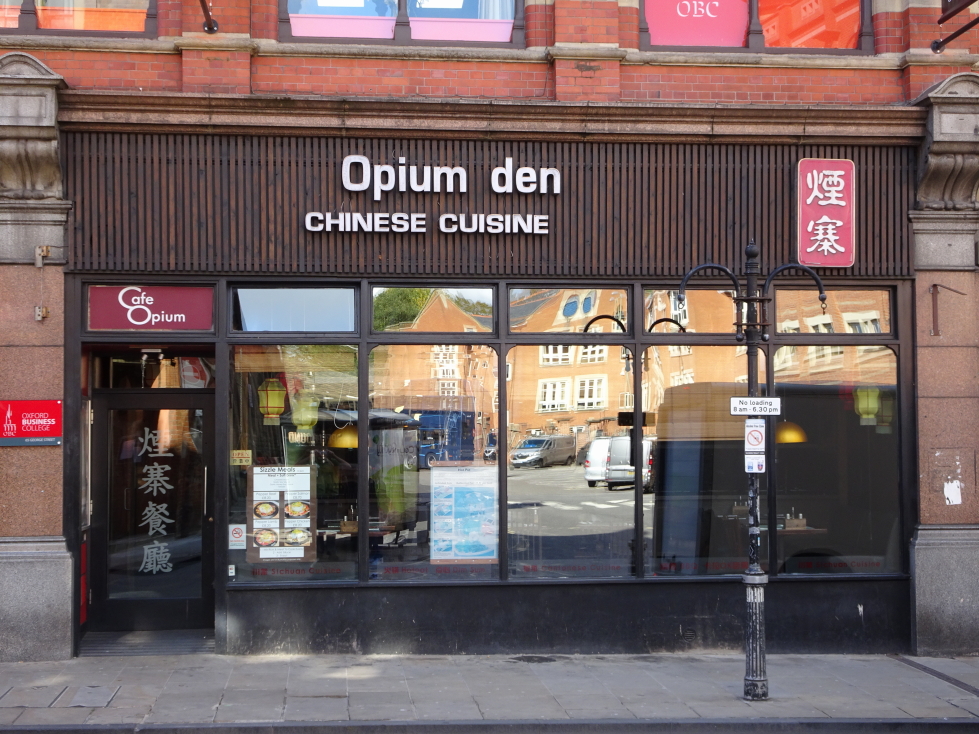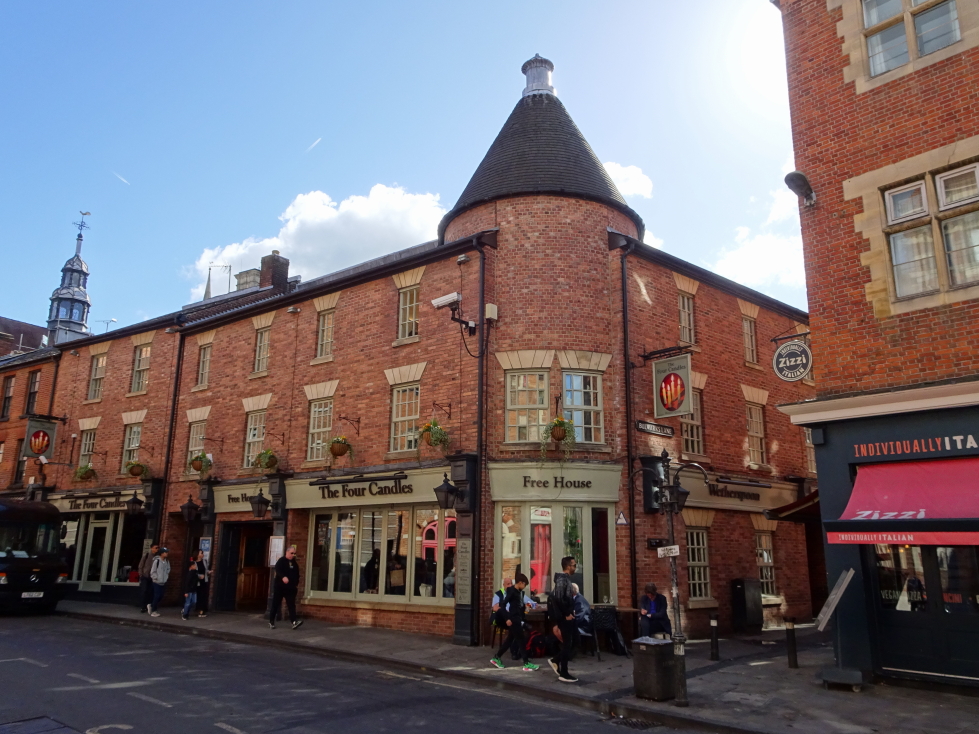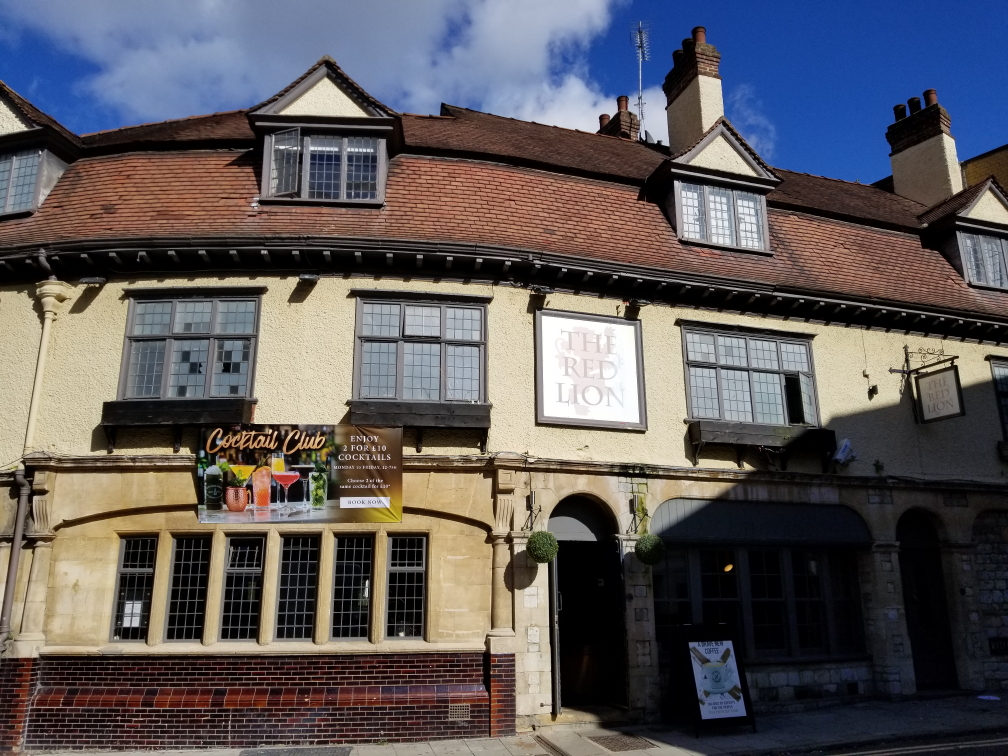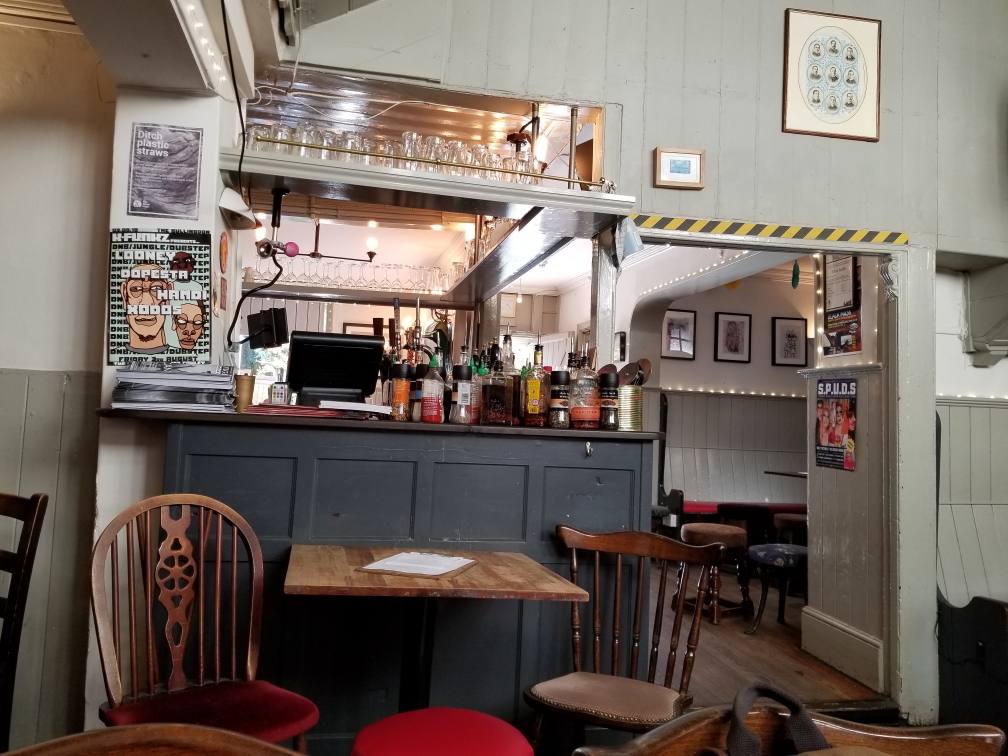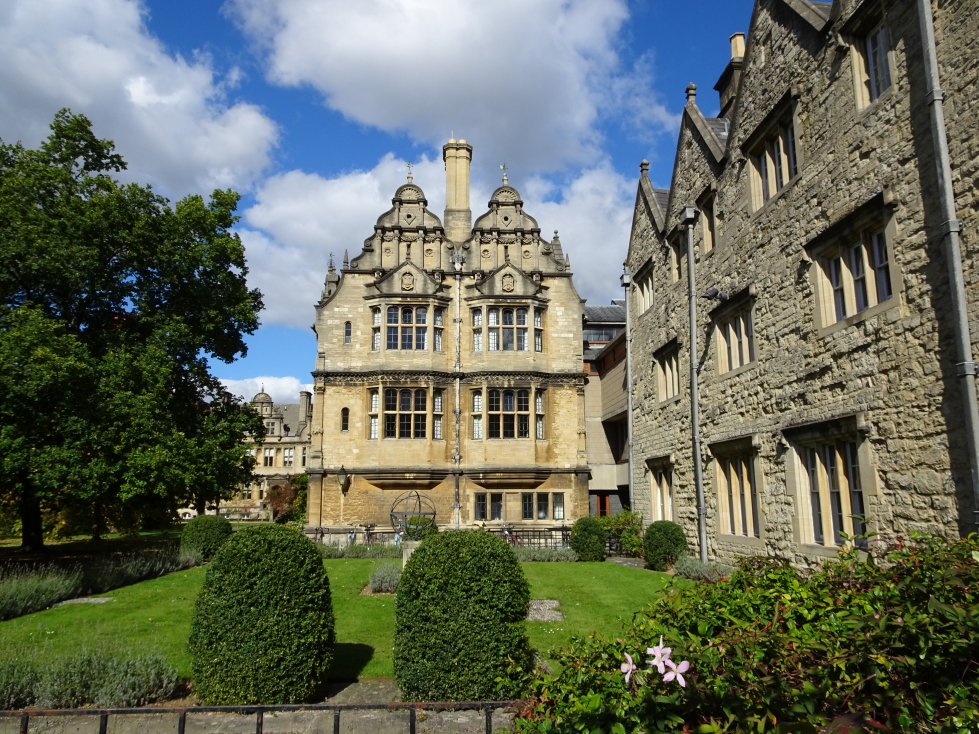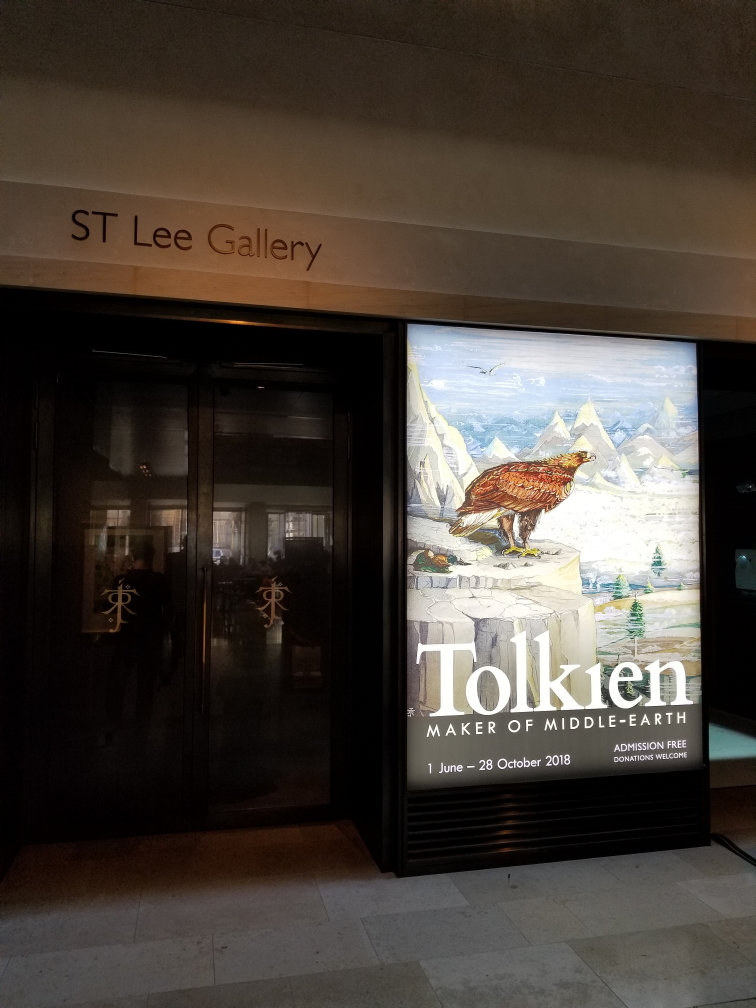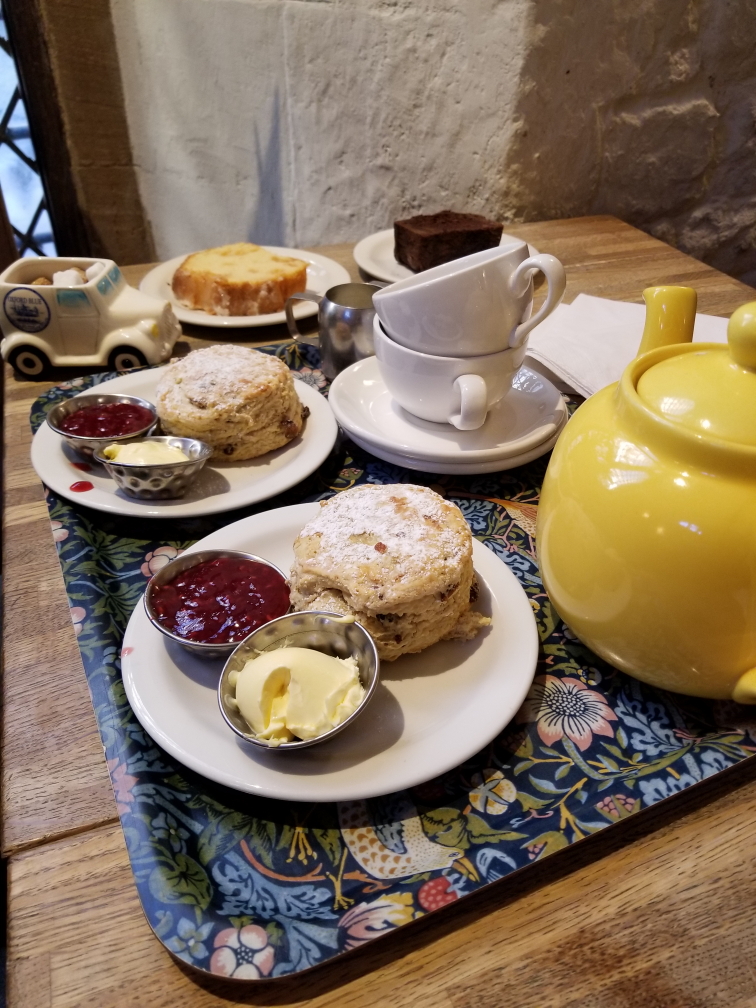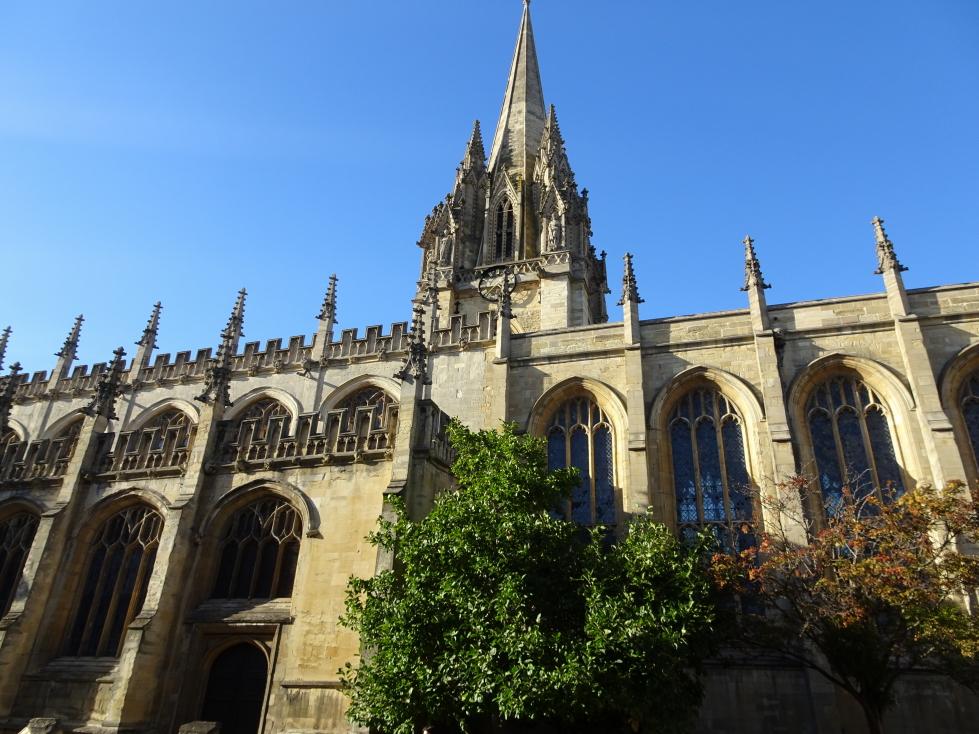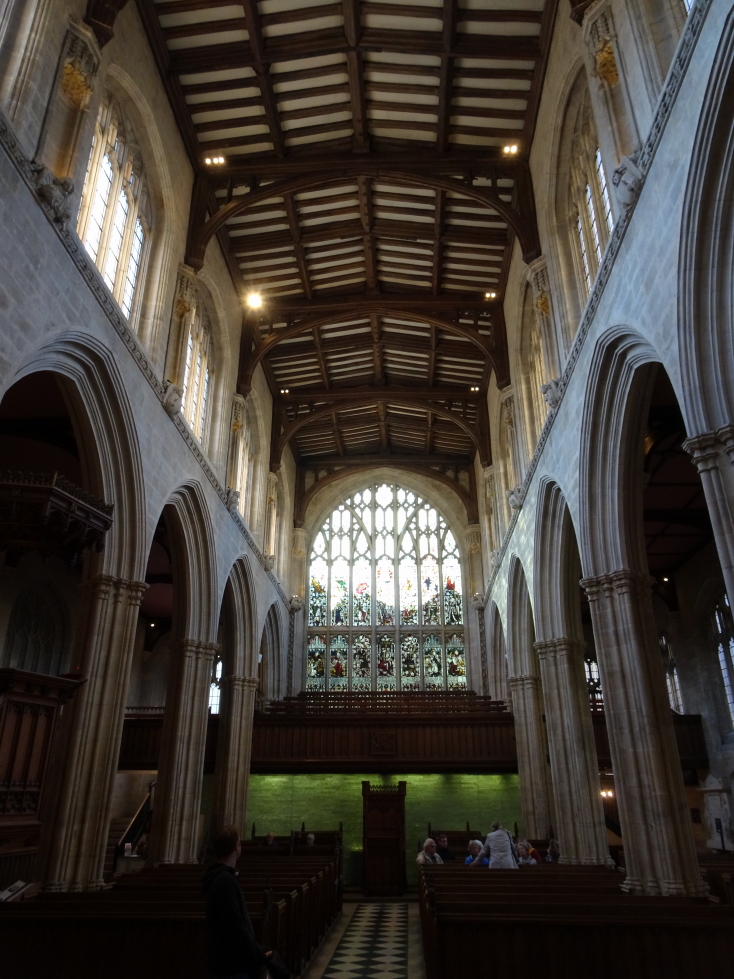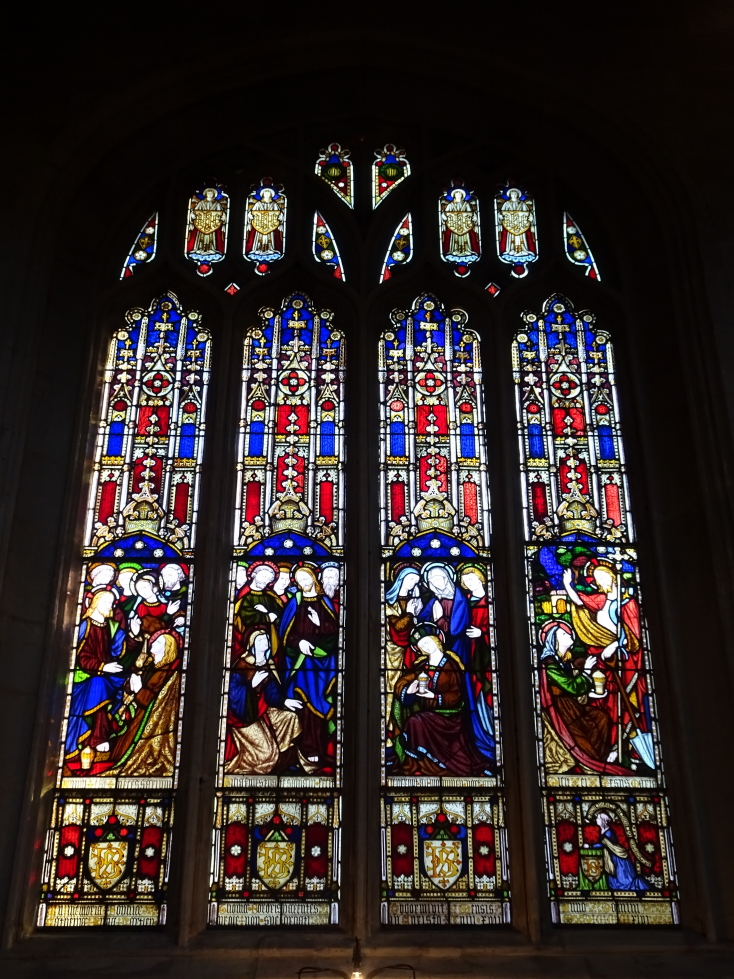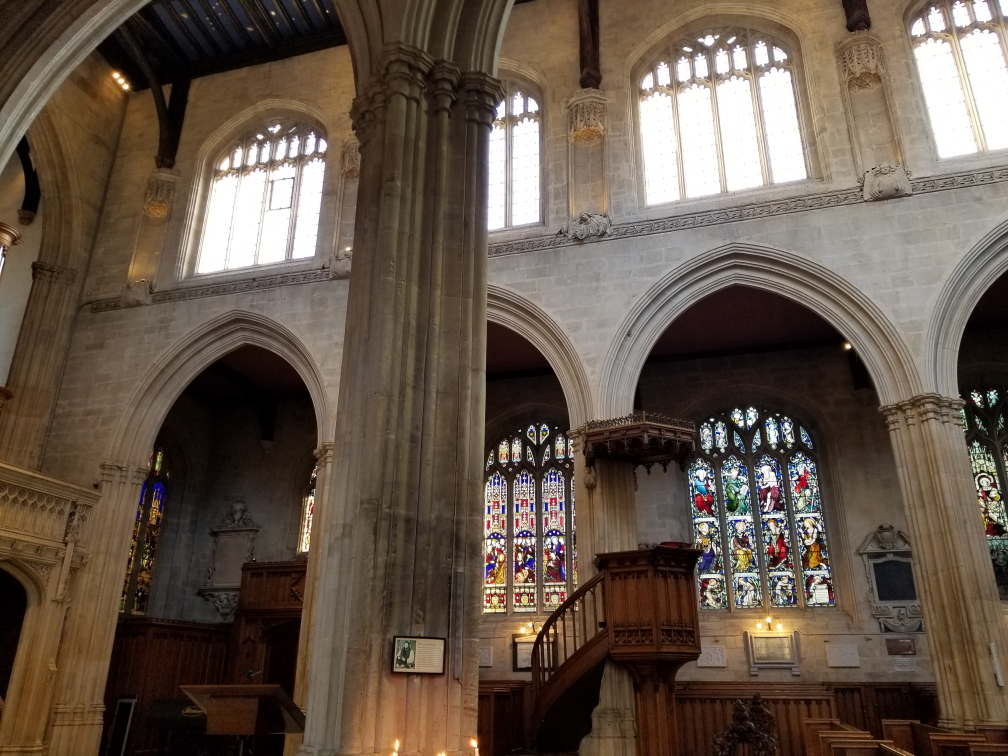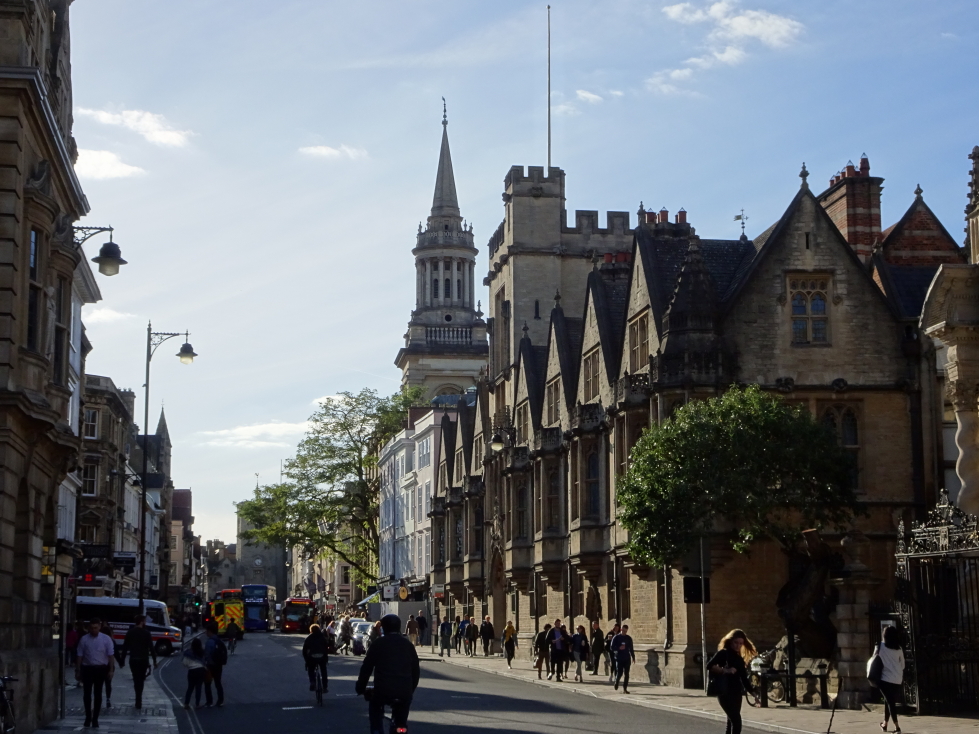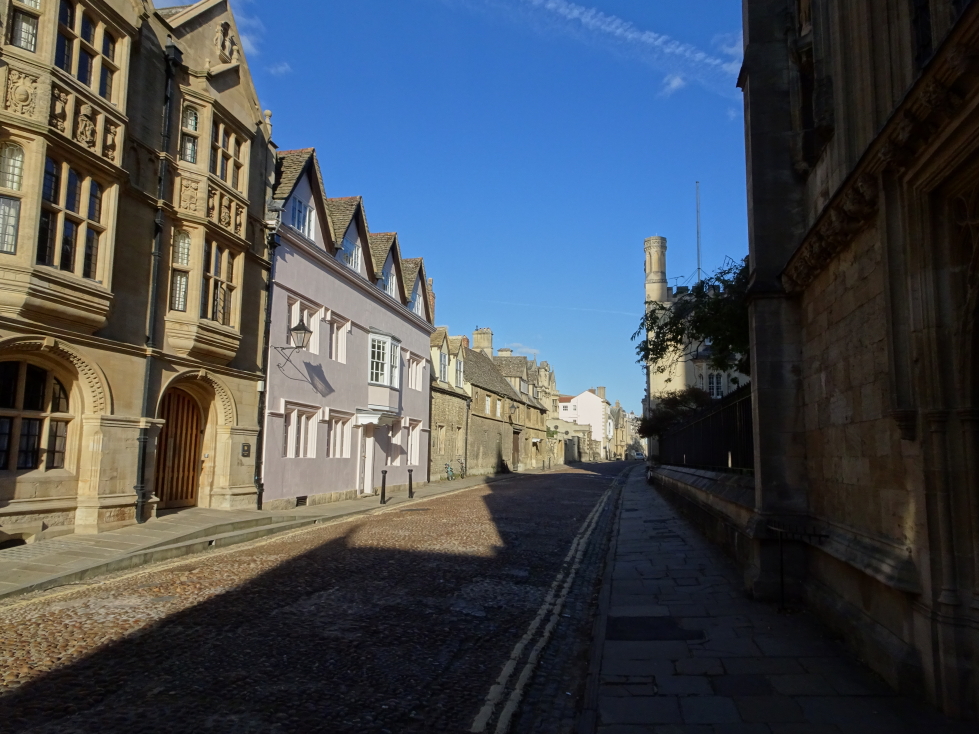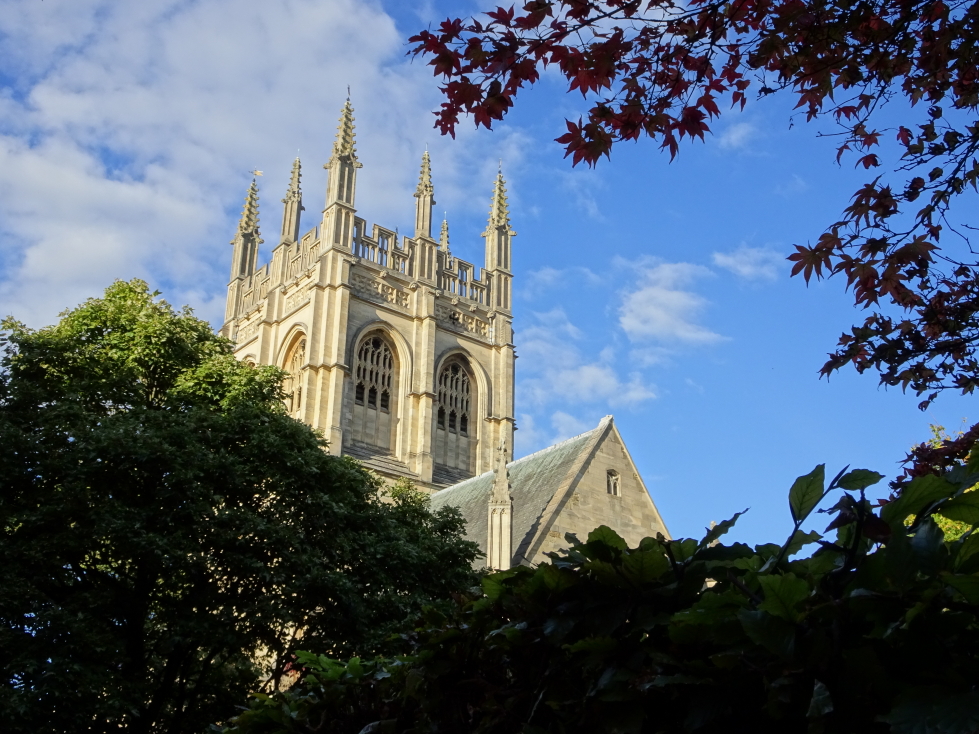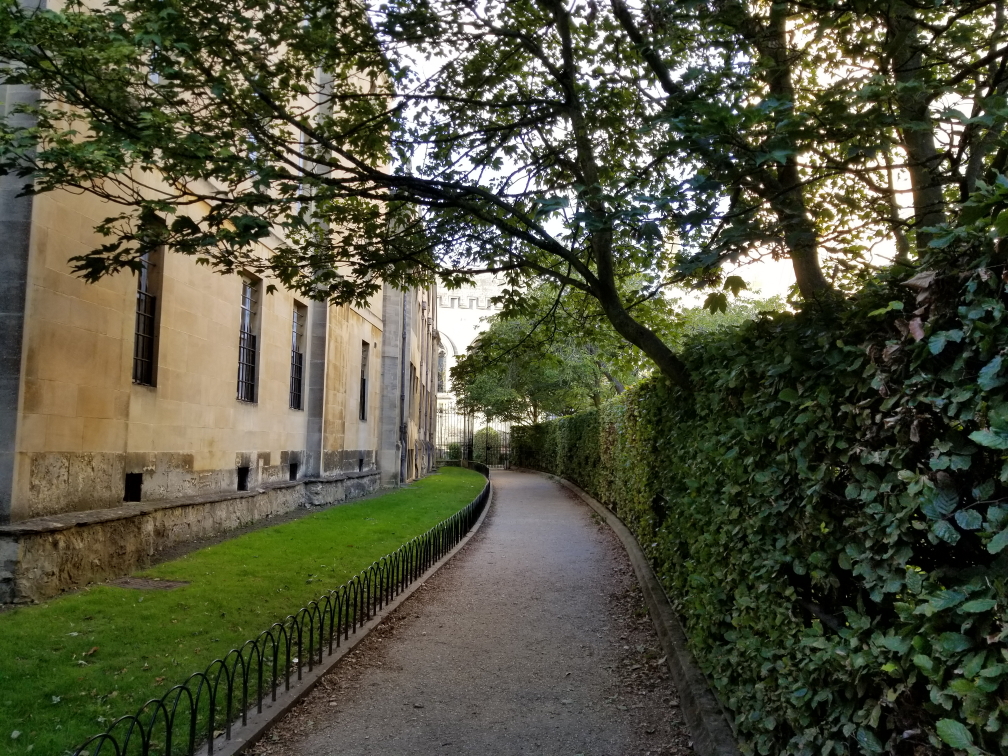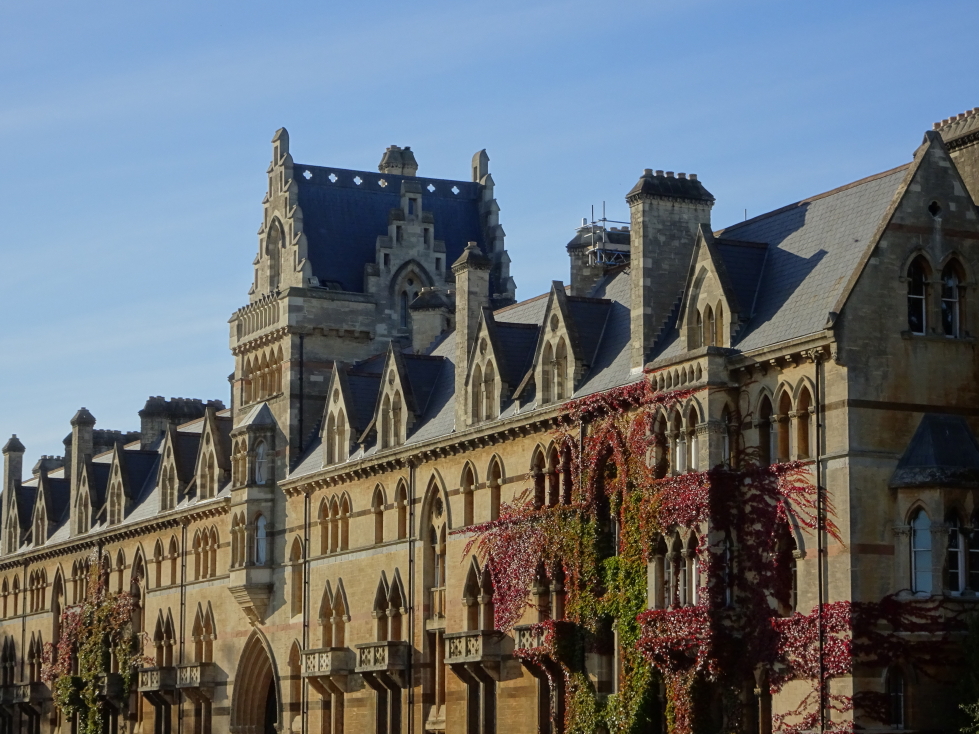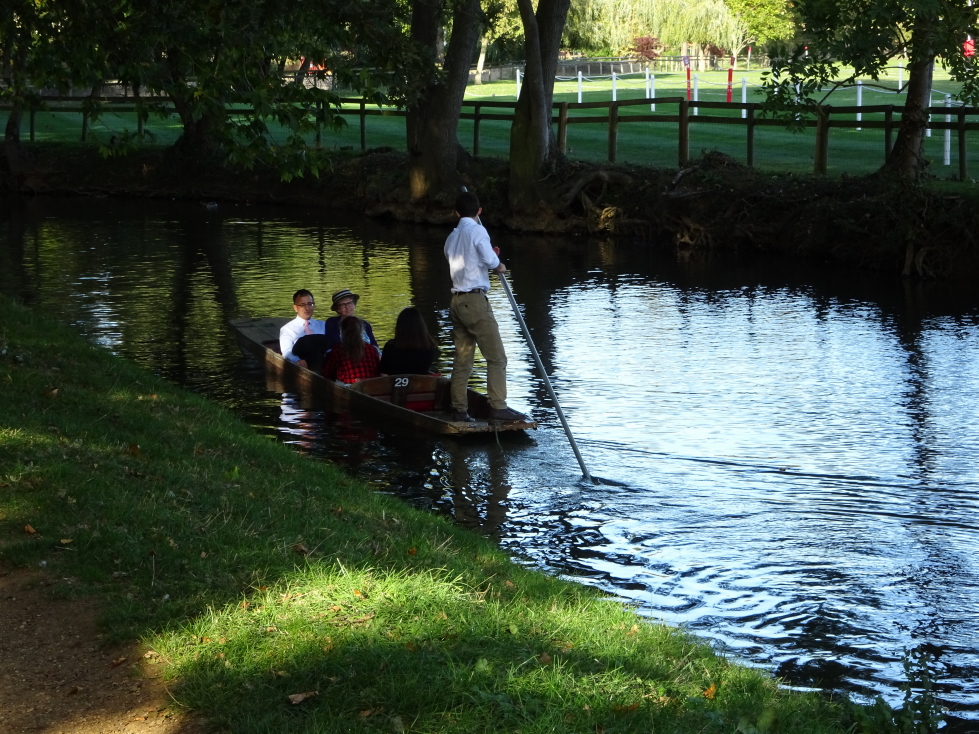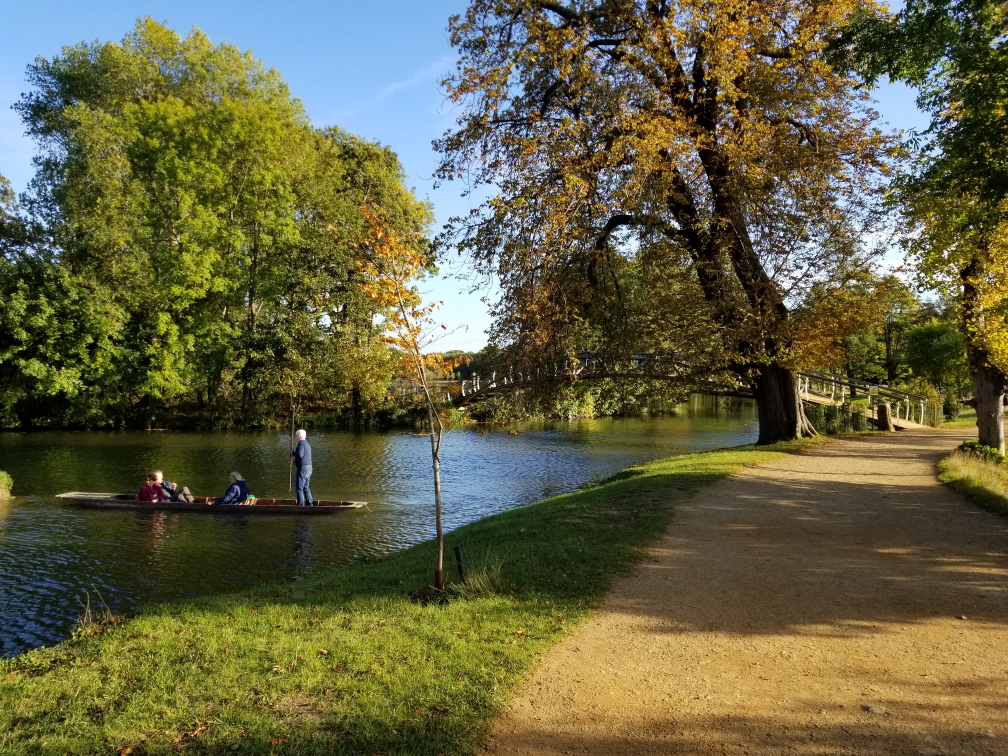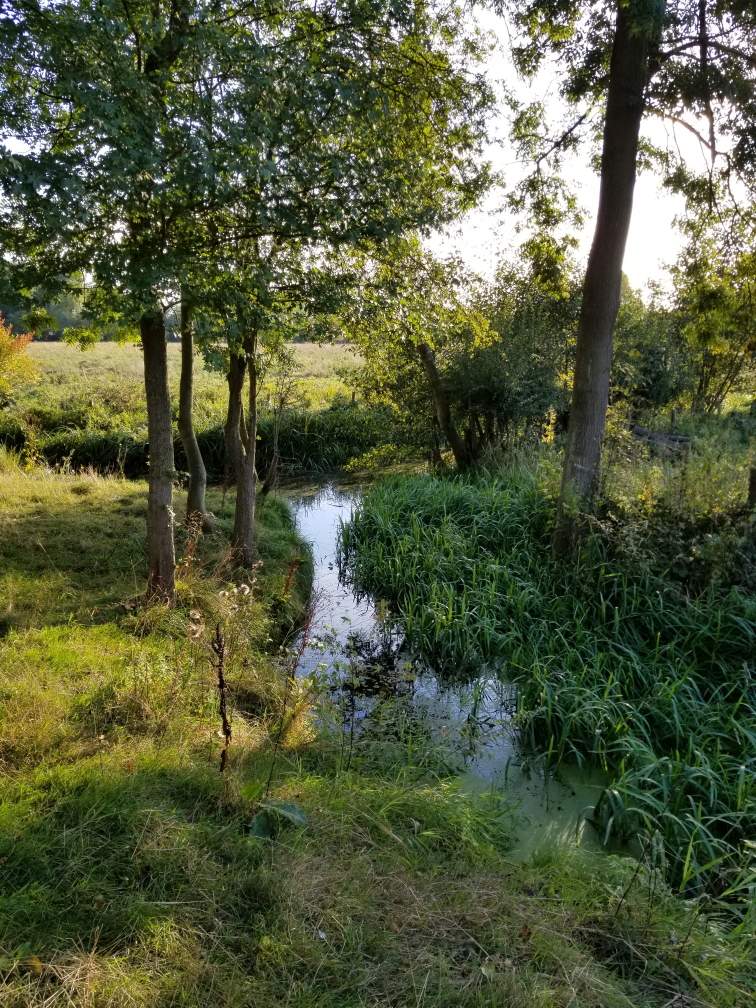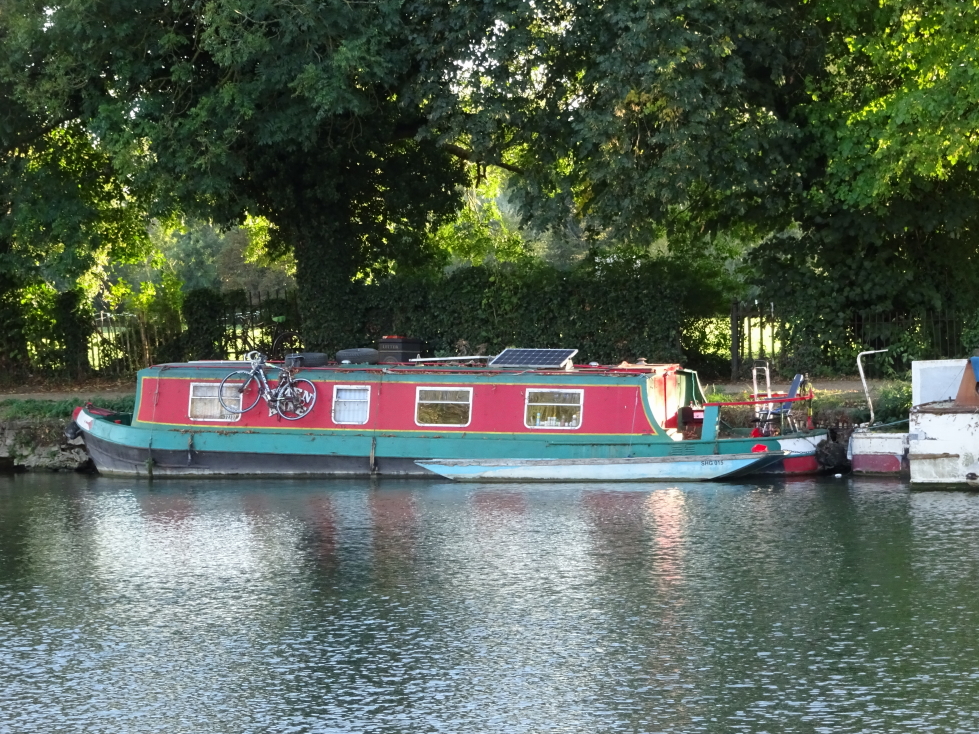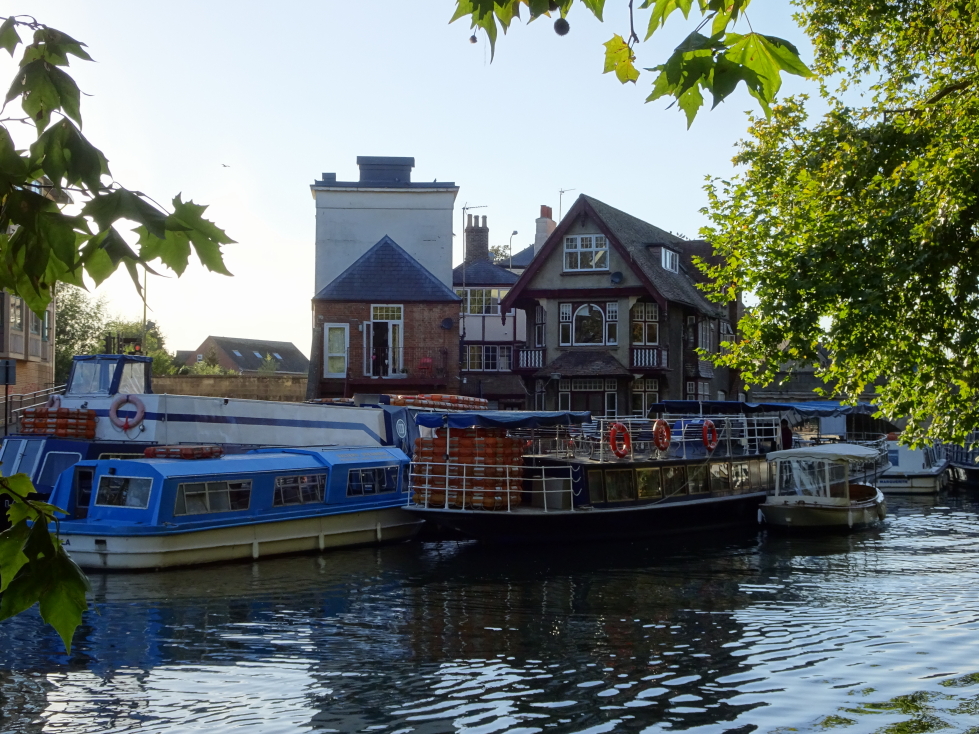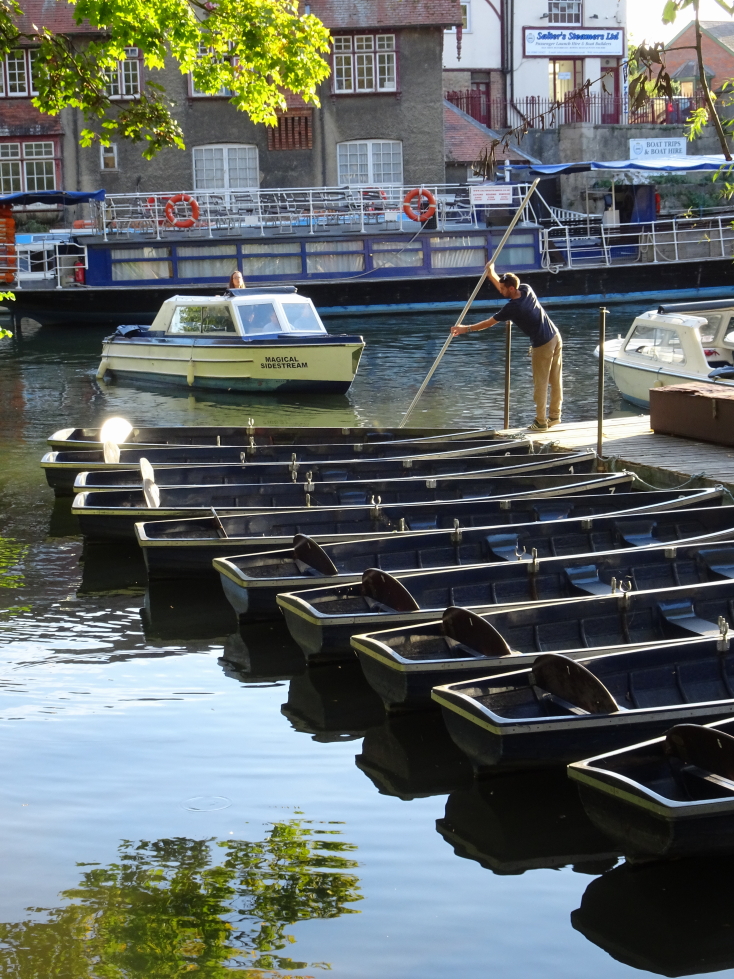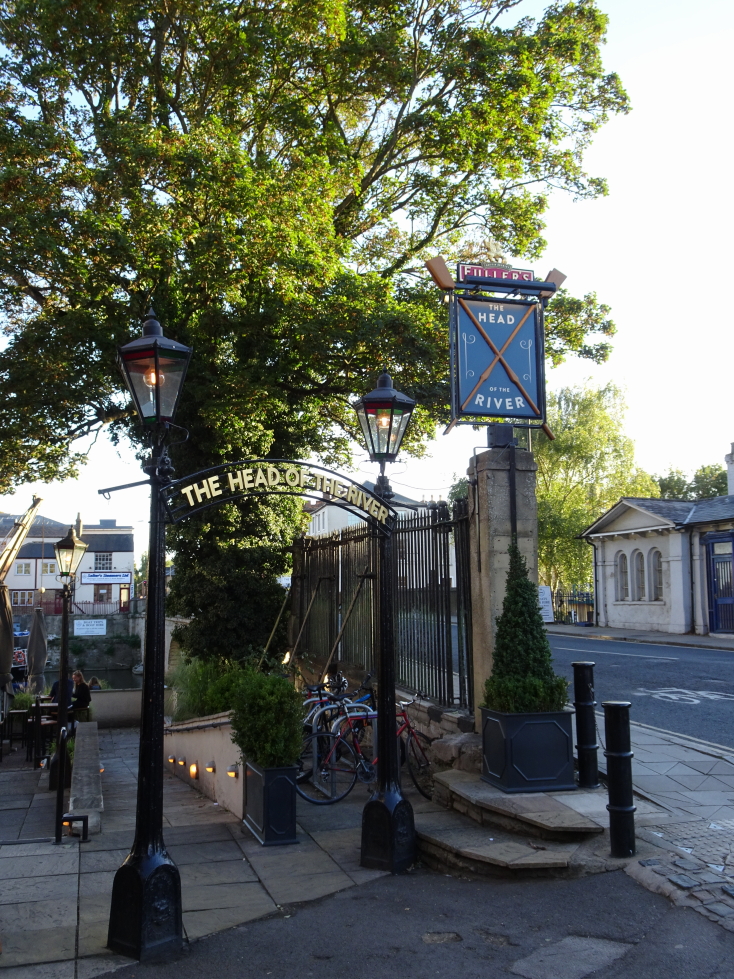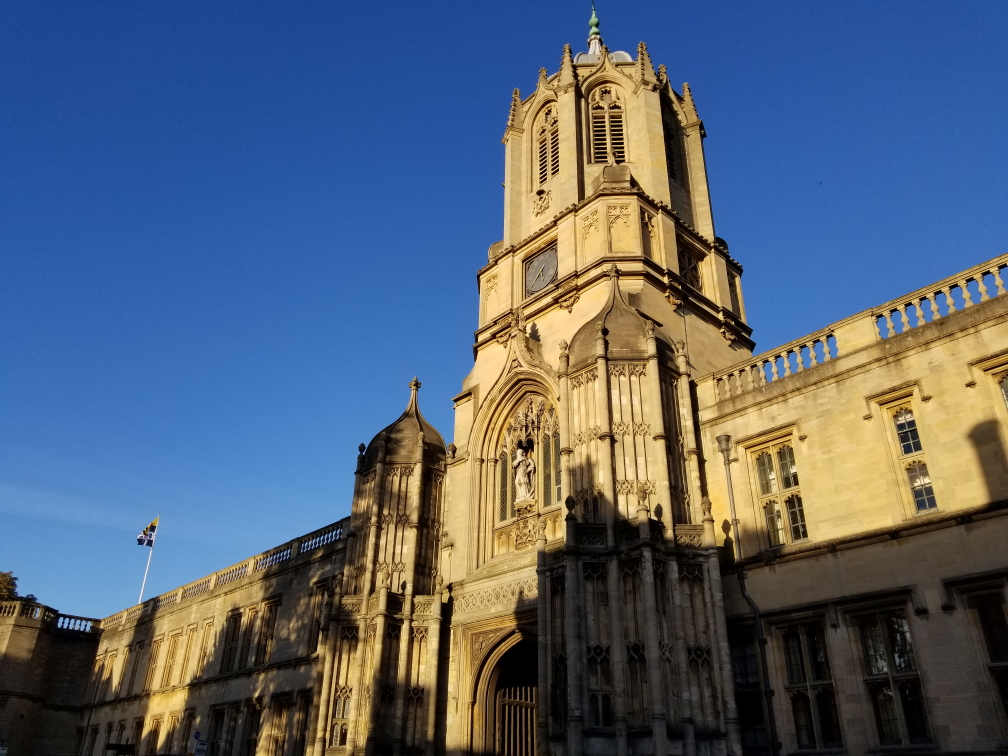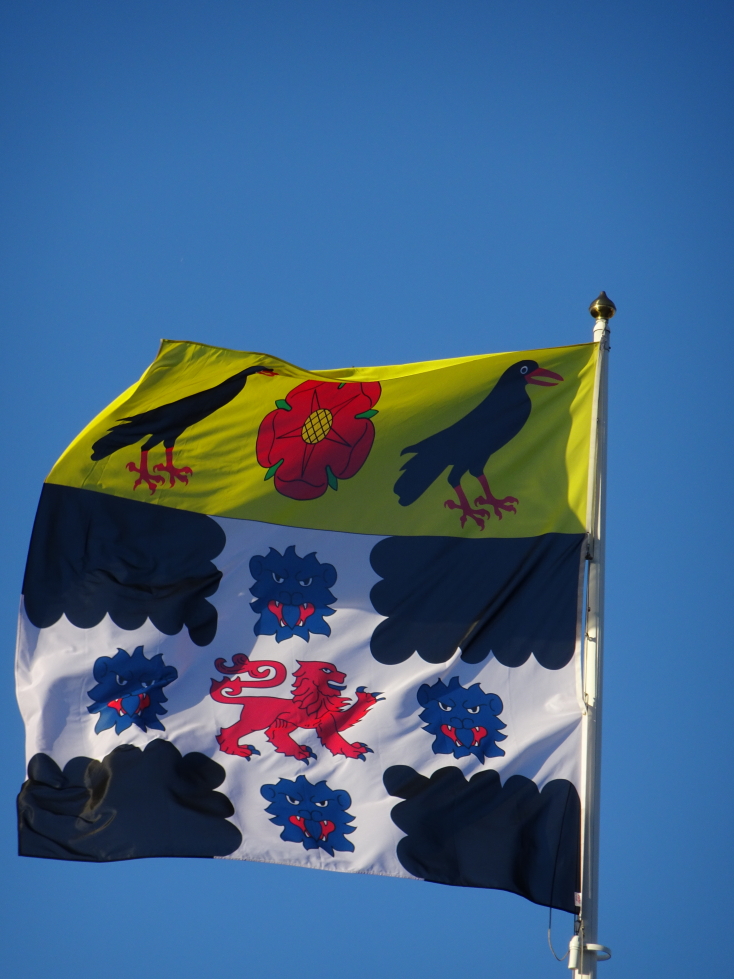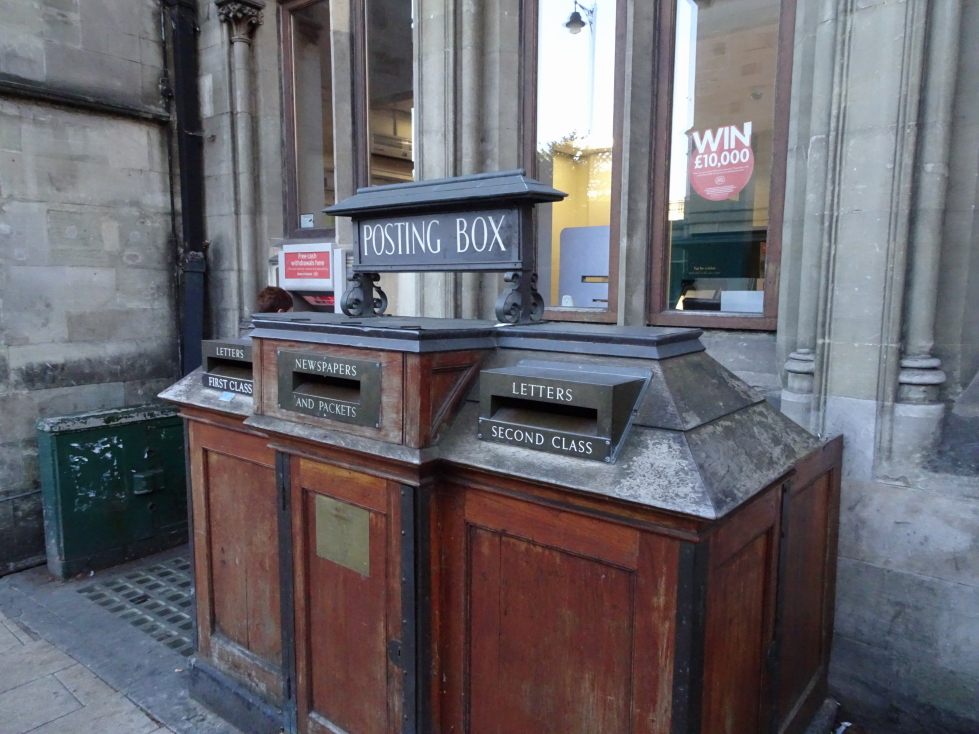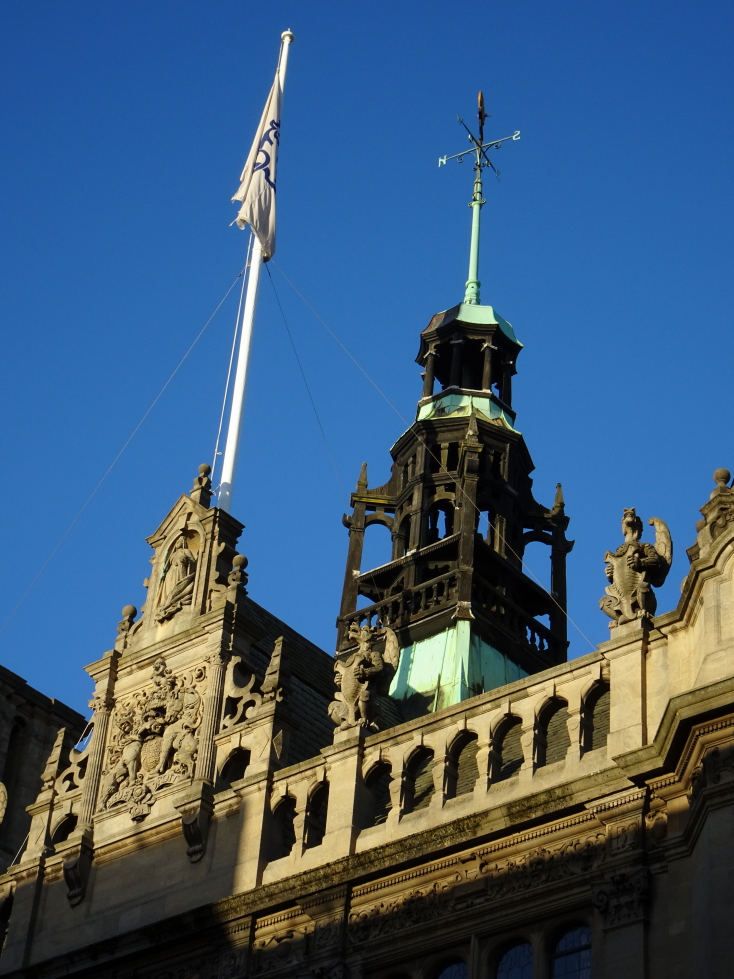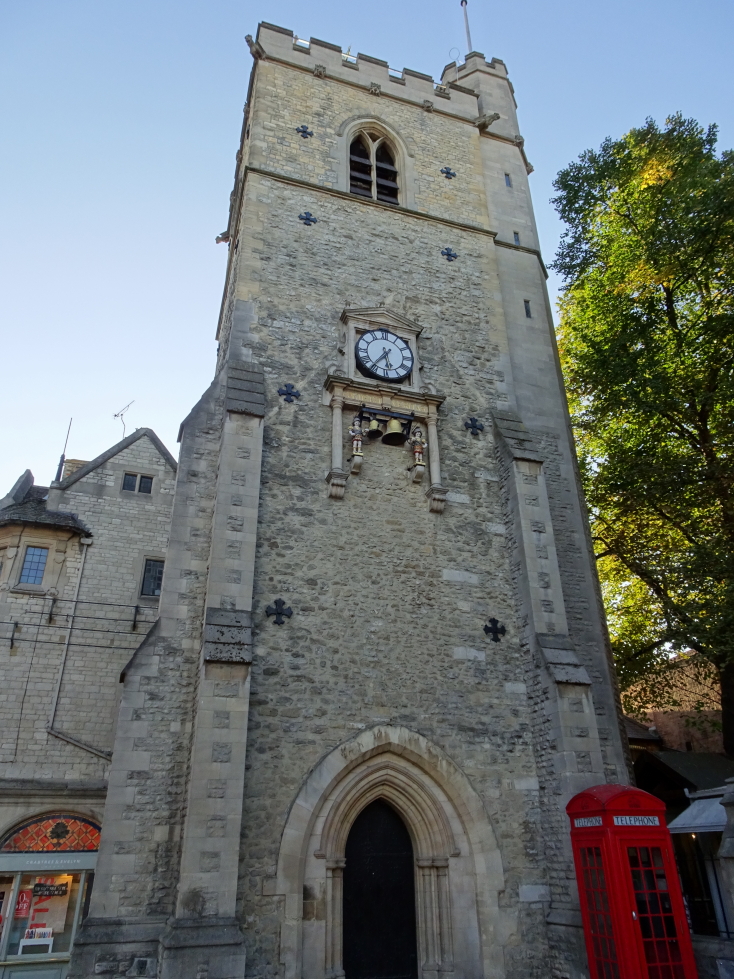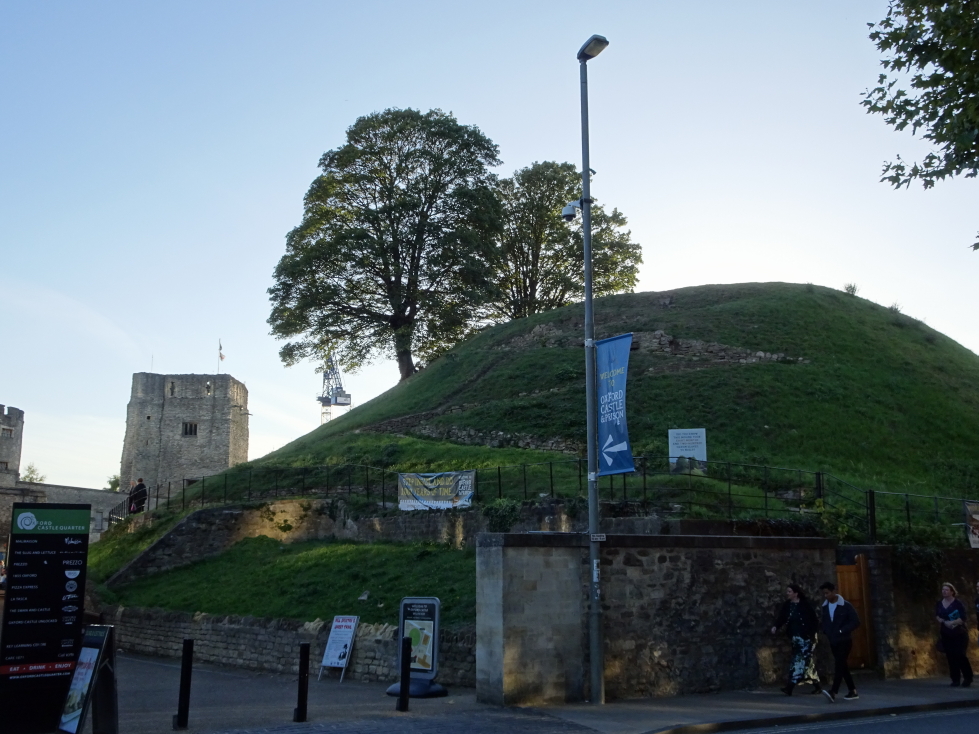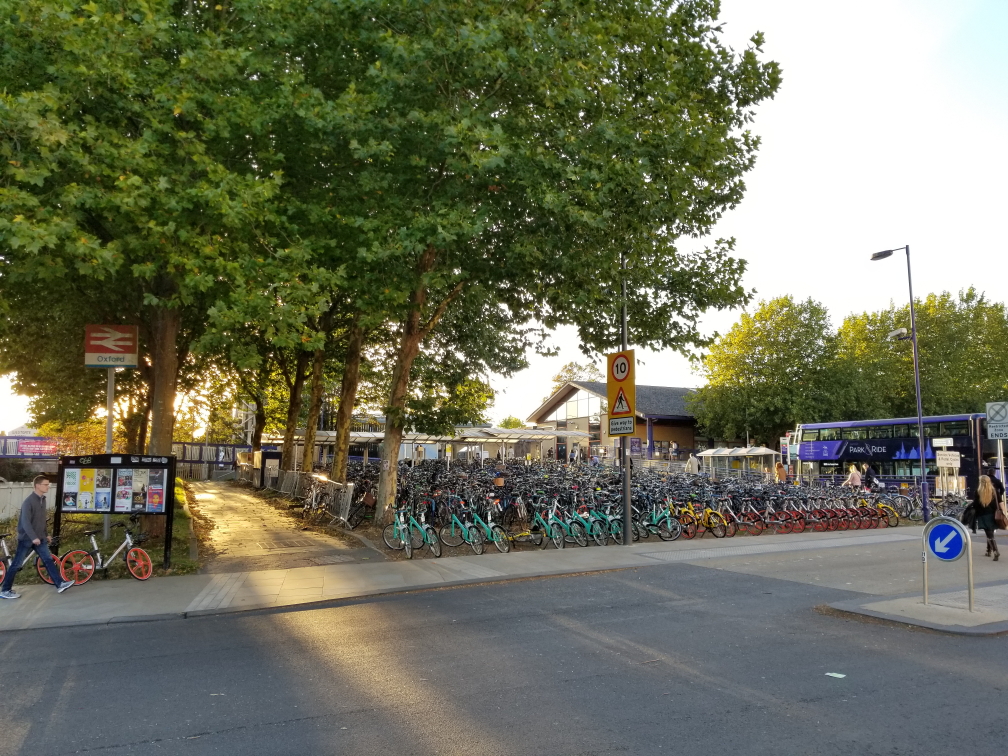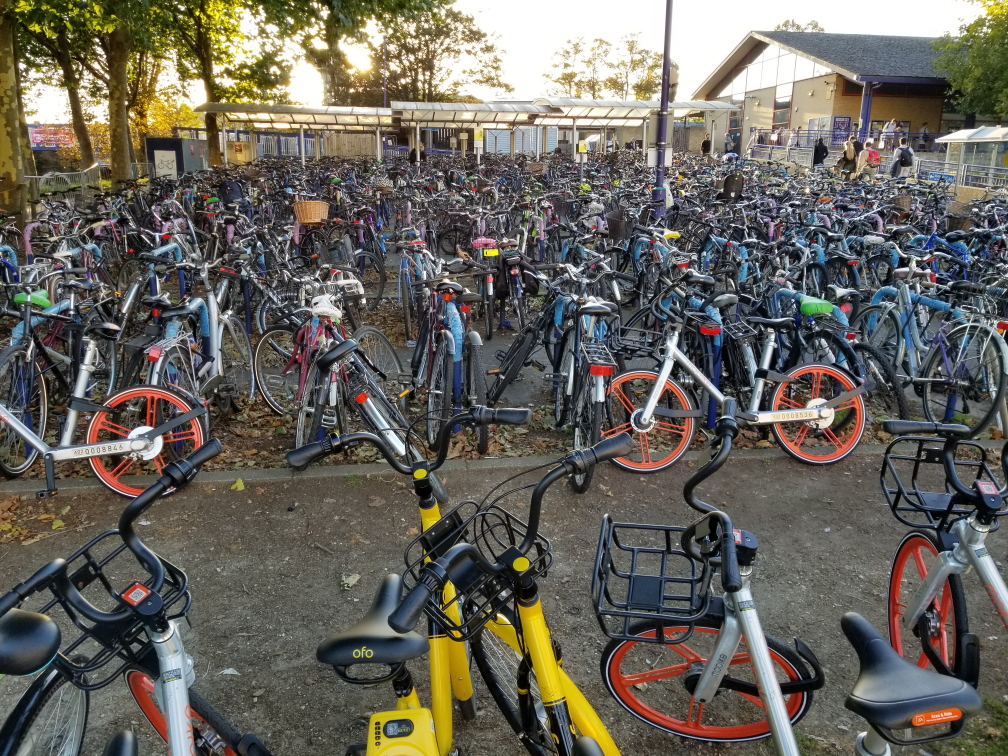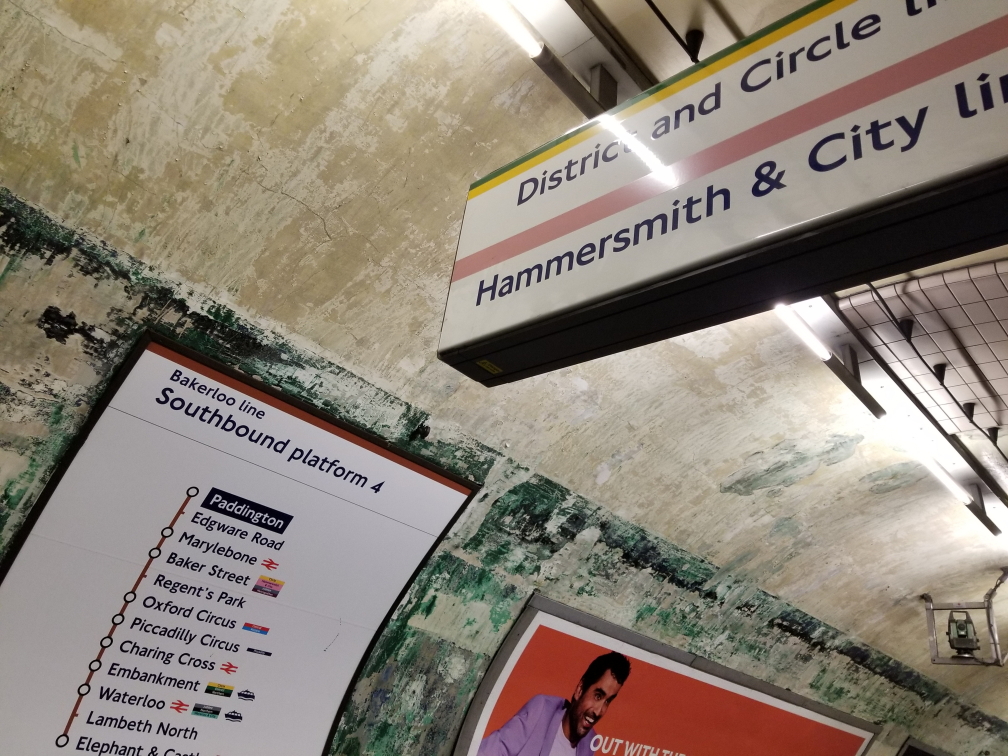Woke up at 6:45a and reluctantly went to our continental breakfast. Even prepared for it it managed to disappoint. Finished packing and checked out of the hotel and left the two large bags and one backpack (leaving us with only one) with our hotel for the coming night, the adjacent Luna and Simone Hotel. We got to Pimlico Underground station a little early, about 9:20a, and waited (mostly) patiently until 9:30a and the beginning of off-peak travel to buy off-peak day passes for just under thirteen pounds each. Took the time to research some dining options for our day trip to Oxford.
Yeah, Oxford. Again. I was still feeling miffed about missing the exhibition on Wednesday and had considered just not seeing it at all but it was pretty much the reason this whole trip happened in the first place. So, we dutifully rode the tube back up to Oxford Circus via the Victoria line then Padding rail station via Bakerloo, arriving in time to catch the 10:22a train to Oxford. It was uneventful and, yes, arrived in Oxford almost exactly one hour later, further reinforcing that the train attendant on Wednesday didn’t know what was up — thirty minutes, indeed!
We walked back across Castle Mill Stream via Hythe Bridge and went into a part of town with narrow streets and the like to The White Rabbit, apparently known for serving the best pizza in Oxford. Surely the internet wouldn’t steer me wrong! We had to wait around a few minutes for it to open, whereupon we took a seat and looked over the menu. It being a pub, we had to order from the bar (as well as get some tap water from pitchers there). We ordered an appetizer of dough balls with garlic butter as an appetizer, Michelle a cheese pizza, and myself a pepperoni (spicy!), ham, mushroom, and onion pizza. We timed it perfectly as about five minutes after we got our food a lady came in seeking to eat there for the twenty-eight in her group. Yikes!
Our lunch finished, we headed through the center of Oxford (after seeing an older lady and a younger man get into it over his cycling in an area that she did not feel he should be) to the Weston Library across from the Sheldonian Theater. We arrived perfectly on time for our 1p time slot. After presenting our tickets for the Tolkien exhibition we proceeded down a small hall, the floor of which the map of Middle-Earth was projected.
Turned left into a mid-sized room which contained the entirety of the exhibition. I was a little disappointed by the size of it at first, but that very quickly faded as the number and quality of the artifacts on display was extraordinary. There was a wall with many different versions of The Hobbit and The Lord of the Rings in numerous languages, along with fan letters from well-known people including the singer Joni Mitchell. Opposite that was a display of items from his earliest years, from living in South Africa prior to his banker dad passing away when he was four, to Birminghamshire (UK) now that the family was quite poor and his mother passing away when he was twelve, to his years living with a priest. I was particularly struck by his mother’s penmanship — it was absolutely beautiful and apparently that (and her love for language) stuck with him throughout his life.
On the flip side of that were items related to his college life at Exeter College in the early 1910s, including notes from the headmaster that he was “v. lazy” and in danger of losing his scholarship. He made a good number of friends there, but sadly they all went off to World War I and few made it back. A picture of the freshman class of 1911 (which graduated just as the war began) was sobering — they highlighted those that died in the war and it was over half. Terrible. It was during World War I that the beginning of many of his later writing happened.
Returning from the war he taught at Oxford. They had many items from his study as well as his watercolors and colored pencils that he used to do so many great illustrations. He married the love of his life, Edith, and had several kids. In a move that made any parents visiting the exhibition feel decidedly inadequate he wrote a beautiful letter with water color art and stamped from the North Pole from Santa. Therein Santa would describe the crazy goings-on in the North Pole, often of his elves and a friendly polar bear fighting off goblins that would steal gifts intended for kids.
It was during this time that the “Inklings” were formed, a group of people interested in writing and literature. Their number included not only Tolkien but also C. S. Lewis. They’d meet weekly and discuss their work, offering a friendly audience and constructive criticism. Tolkien taught Old and Middle English literature and was particularly known for his courses on Beowulf. He felt that the 1066 Norman conquest had cut short the potential for a great Anglo-Saxon epic and busily started constructing a world from the ground up that could eventually serve as the basis for one.
There were numerous artifacts on display that showed this construction, from early sketches of fantastic locations (many of which would make it into his writing) in a sketchbook he called the “Book of Ishness”, to language trees, samples of Elvish, Dwarvish, and others, etc. What was interesting to me is to hear just how much of his writing was coming together all at once — the Silmarillion actually pre-dating most all his other thoughts despite that work ending up not being published in his lifetime.
Creating stories for his kids, like “Roverandom” about one of his son’s lost dog, eventually lead to his classic children’s tale “The Hobbit”. He penned the famous opening line “In a hole in the ground lived a Hobbit” while bored grading papers in the 1920s then did nothing with it for years. He also, early on, drew the Thorin’s map (the one with the pointing hand). In the mid-1930s he sent it to a publisher and the publisher was so taken with his illustrations and jacket design that they used those as well. They didn’t expect much but it ended up becoming a world-wide phenomenon.
One wall of the exhibit was dedicated to showing the original watercolors of many of “The Hobbit”‘s illustrations. “Conversations with Smaug” was incredible, I’d never noticed some details like the black lines coming out of the door behind Smaug or the scattered bones of other adventurers that had dared to try and steal from the great dragon. Watercolors of the Great Eagle in its nest and Bilbo riding with the barrels (with the Dwarves within) down the river were beautiful. I’ve seen the book’s original dust jacket my entire life but seeing the original, with publisher’s notes like “ignore red” (as it was deemed too expensive to add another color) was another thing entirely. There were also some pen and ink illustrations like the trolls and even the front page of the submitted manuscript (minus the “by J. R. R. Tolkien” byline as he had forgotten to add it, so the publisher scrawled it on).
Another area was devoted to the Silmarillion and Lost Tales (neither published in his lifetime). Highlights here were the pen and ink and watercolor designs used for the various houses of Elves and the like. Nearby was Michelle’s favorite part of the exhibition — completed crosswords (in impeccable penmanship) with the surrounding newspaper absolutely covered in beautiful doodles — both geometric and lace-like.
There were a couple of free-standing displays showing off various maps related to “The Lord of the Rings”. They were done on graph paper and very much “working maps” — he was very careful to ensure that the characters did not travel farther than possible each day, even inventing his own Hobbit units of measure based on toenails. Yeah, guy was a bit obsessed! As he’d need to correct areas of the map he’d draw corrections on small bits of graph paper and then tape them on to the original. We could even see a few burn marks on the maps from his pipe.
This detail included not only maps but also he made a timeline of what all of the various factions of his story (Orcs & Enemies, Allies & Friends, Frodo and Sam, Merry and Pippin, the Company) were doing each time, at the same time, so that it all lined up. There were also illustrations of some of the locations in LotR as well as the original jacket designs (though meant to be one book it was too large to publish as such). There was even a note by a young reader who read the first bit of LotR and was asked to give feedback by the publisher. The reader noted that it was a bit slow (very true) but the appearance of the Black Riders greatly intrigued them. Also at that point the book was called “The Magic Ring” — thank goodness he fixed that.
The last thing in the exhibition was a poster map done in the late 1960s by Pauline Baynes for LotR. It was extraordinary, colorful but with that style that only the late 1960s could deliver. I resolved to hunt down a print of that poster map some day.
I was struck as I left by the enormity of what he had created. In this day and age of Game of Thrones, The Wheel of Time, and the like it is considered normal to create worlds whole-cloth with meticulous detail and use that as the foundation for story telling. He didn’t have a blueprint to follow. Just a love of the epics of old, an interest in maps and languages, and illustration. In doing so, he created the modern Fantasy genre, led to its popularization (would Dungeons & Dragons have happened? Game of Thrones? I think it unlikely), and one could argue did create the epic for England that he felt the Normans had robbed them of.
Leaving the exhibition about 3p we bought a couple of things as well as checked out a remarkable tapestry map from the 1500s showing many towns in central England. There was also an “exhibition” — this one just a glass case like a trophy case — looking at various Kings and Queens of England and ailments that killed them and whether they’d have been fatal today. This included Henry VIII (morbid obesity and diabetes), Elizabeth I (smallpox scars from youth led her to use lead-based makeup throughout her life — which caused her to lose her hair and also damaged her skin), George III (madness), etc. Interesting.
We then headed south at about 3:30p to near the Radcliffe Camera and the adjacent Oxford University Church. In a corner of the Cathedral was a room where officials had met since 1320 which was now a cafe, Vaults and Gardens. Outside was a patio, surrounded by hundreds year old graves, overlooking Radcliffe Camera. We each got afternoon cream tea (house blend) which came with a raisin scone and raspberry jam and clotted cream. We also got a slice of lemon drizzle cake and also chocolate fudge cake. The chocolate fudge cake was average, at best, but the lemon drizzle was moist and just tart enough. The tea itself was excellent as well, as was the scone with jam. It was really neat to have tea in such a historical location.
Once we finished we walked past Christ Church and into the adjacent Christ Church Meadow nestled between the River Cherwell in the east and the River Thames in the west. We did a clockwise circuit all the way around it, enjoying the cows and punts and massive trees as well as still waterways chocked with green vegetation and reeds. Also saw some Canadian geese, apparently introduced to the area — who the heck did that?! I did my customary finger gun “pop pop pop” at the little bastards. Hate them.
As we came around to the west side of the meadows we got back on to Oxford’s streets at Folly Bridge. As it was evening a gentleman was wrangling punts with a pole as he was being hailed by one of the many river boats on the Thames.
Walked up St. Aldate’s and past several important buildings: Christchurch Cathedral, the Oxford town hall, and Carfax Tower — the only remains of a medieval church.
We then turned west toward Oxford’s castle mound (remains of a Norman motte and bailey castle, of which only a tower remains — dating back to the Saxon times) before returning to the train station, our feet hurting a bit, just before 7p. We quickly boarded the train to Paddington (carefully getting the one that only stopped at Reading and Slough) and were back in London just before 8p. A couple of Underground hops later and we were back in Victoria station.
It being a Friday night the pubs were full and people drinking with their friends spilled onto the sidewalks. We decided to try a (of all things) Mexican restaurant, Loco Mexicano, on Wilton Street. It was OK, I guess. A bit expensive (but that’s London). Not offensively bad like the Mexican we had in the Adirondacks in 2011, just soulless. We had two appetizers, chips and salsa (the salsa being more of a tomato paste like texture) and Cajun mushrooms (mushrooms stuffed with cheese, breaded, and fried). The mushrooms were good, at least. Michelle had the pulled pork enchilada and I a spicy beef burrito — though my meat looked exactly like pulled pork and tasted it too, so I suspect that it was. Probably a good thing, the universe doing me a solid.
Left the restaurant at a bit after 9p and walked the short distance to the Luna and Simone Hotel, our lodging for the next two nights. Check in was quick, room 8, and on the landing between the first and second floor. Excellent, I thought, not many stairs to carry luggage up (there being no lift)! My happiness faded when we went up a half floor and there was no room 8. Ugh, that’s right, the first floor is the second floor in America. Room was nice, a little bigger than the one at the Lidos Hotel and it was nice to have one bed rather than two singles. The bathroom was larger too, though the sink and I didn’t get along too well, it splashed everywhere!
Blogged a bit, off-loaded pics, and watched TV (Medium first, then the series (they don’t call them “seasons” there) premiere of the Graham Norton Show). We had put in for tickets for the Graham Norton Show taping but were never contacted. Probably for the best, it filmed at just past 6p on Thursday and we were just getting out of Hamilton at that time. After Graham turned off the TV and went to bed, just past midnight.
